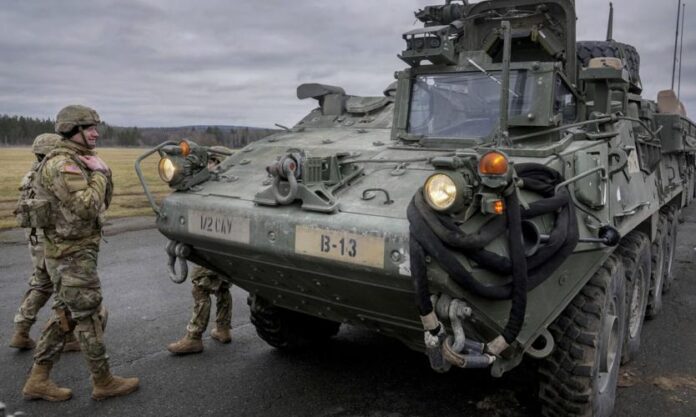RAMSTEIN AIR BASE, Germany (AP) — Defense leaders gathered at Ramstein Air Base in Germany noted an intense appeal for more aid Friday from Ukrainian President Volodymyr Zelenskyy as they strive to resolve divisions over who will arrange battle tanks and other military cooperation to his fighting country.
And as the conference began, U.S. Defense Secretary Lloyd Austin warned that, ““this is a crucial moment. Russia is trying to regroup, recruit and re-equip. ”
Now is a defining moment for Ukraine and “a defining decade for the world,” Austin said, adding that the group’s presence in Germany demonstrates their unity and commitment to continued support for Ukraine.
“We need to keep the momentum and determination going. We need to dig deeper,” Austin told the gathering of nearly 50 defense leaders in person and on video.
A Kremlin spokesman said Western use of tanks would have “clearly negative” consequences.
At a press conference on Friday, Kremlin spokesman Dmitry Peskov said: “All these tanks require both maintenance and repair, so [sending them] will add to the problem for Ukraine. It will not change the ability of the side to achieve its goals.” Austin and the Chairman of the Joint Chiefs of Staff, General Mark Milley, were to discuss the United States’ latest massive aid package, totaling $2.5 billion, including the first-ever Stryker armored vehicle.
The US has also refused to provide M1 Abrams tanks, at least for now, citing the high-tech vehicle’s large, complex maintenance and logistical challenges. The U.S. is more productive to send leopards because many allies have leopards and the Ukrainian military only needs to train leopards rather than needing more training on the more difficult Abrams.
Britain announced last week that it would be sending Challenger 2 tanks, describing it as a natural progression of military aid to Ukraine.
At a Pentagon briefing on Thursday, spokeswoman Sabrina Singh said the Abrams tanks are much harder to maintain and do not fit well, so the Leopard and Challenger are no match for the Abrams tanks.
“It’s a question of sustainability. I mean, this is a tank that needs jet fuel, but the Leopard and the Challenger have different engines.” The Leopard and Challenger are “a little easier to maintain,” Singh said. Told. “You can maneuver most of the territory before you need to refuel. The maintenance and the high cost that it would take to maintain an Abrams — it just doesn’t make sense to provide that to the Ukrainians at this moment.”
The latest package of U.S. aid includes eight Avenger air defense systems, 350 Humvees, 53 Mine Resistant Ambush Protected (MRAP) vehicles, more than 100,000 rounds of artillery ammunition and rockets, and missiles for the High Mobility Artillery Rocket System.
Other pledges announced ahead of the Ramstein meeting included S-60 anti-aircraft guns from Poland with 70,000 rounds of ammunition, additional Stinger air-defense systems and two M-17 helicopters from Latvia, and two Russian-made Mi-8 helicopters and dozens of L-70 anti-aircraft guns with ammunition from Lithuania.
The influx of new weapons, tanks and armored carriers comes as Ukraine faces intense combat in the country’s east around the city of Bakhmut and the nearby salt mining town of Soledar. Combat is expected to intensify in the spring.






